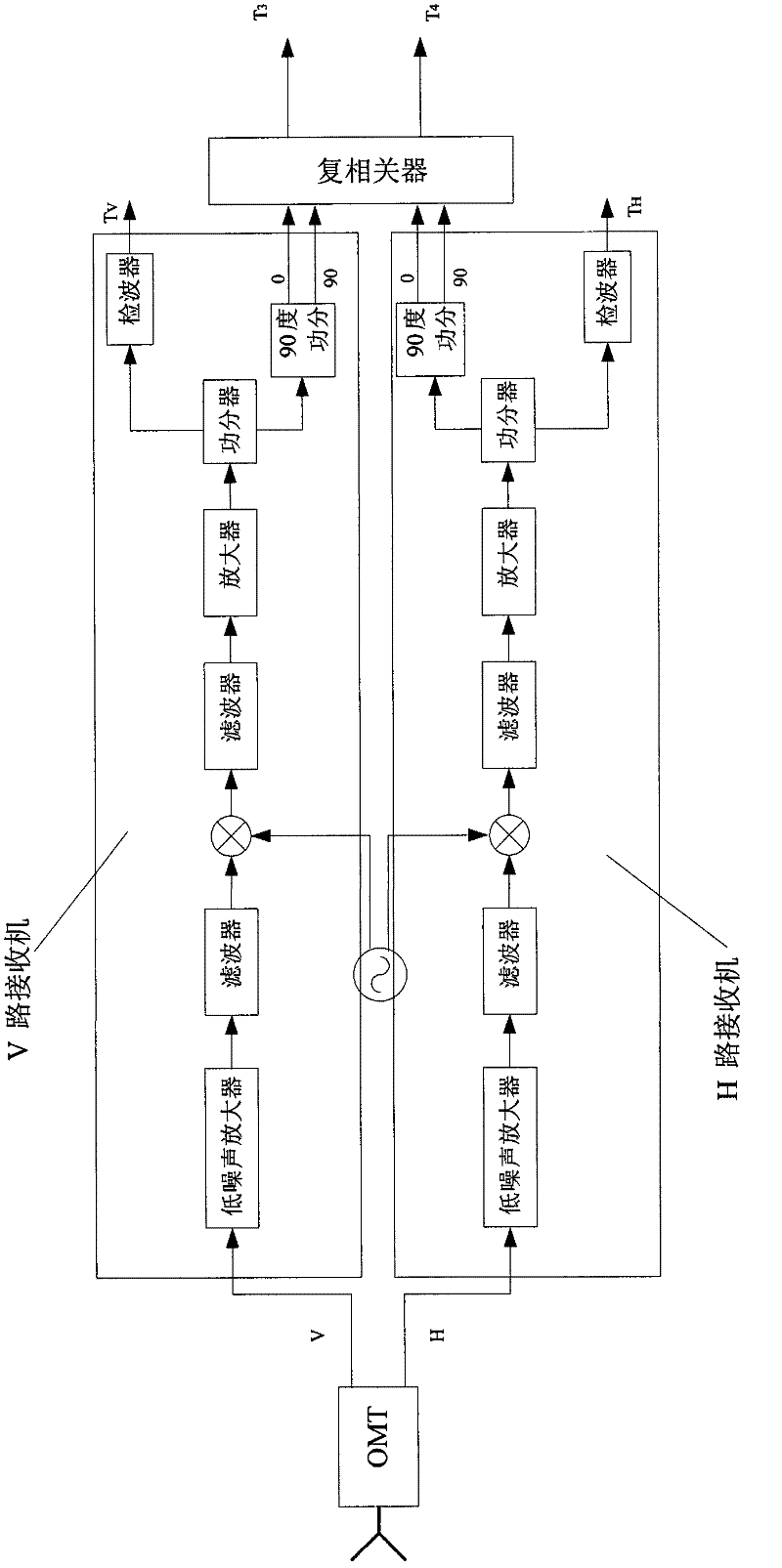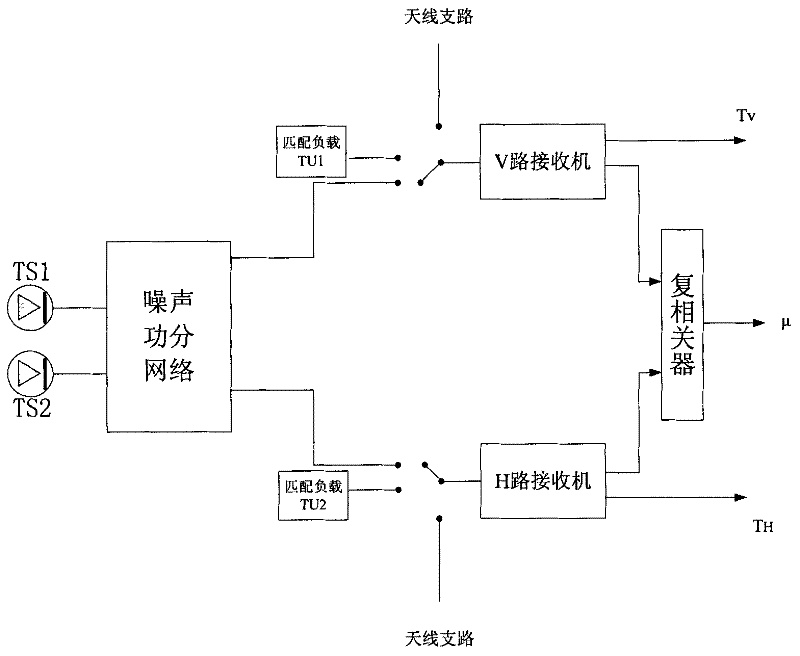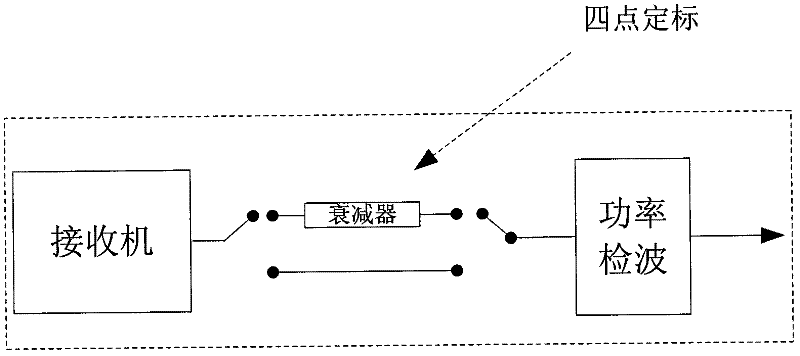Direct correlation-type complete polarization microwave radiometer receiver scaling method
A microwave radiometer and receiver technology, applied in the field of microwave remote sensing, can solve the problems of calibrating a full-polarization calibration source, the influence of the application of the full-polarization calibration source, and the high processing accuracy of the full-polarization calibration source
- Summary
- Abstract
- Description
- Claims
- Application Information
AI Technical Summary
Problems solved by technology
Method used
Image
Examples
Embodiment Construction
[0029] Specific embodiments of the present invention will be further described in detail below in conjunction with the accompanying drawings.
[0030] Such as figure 1 Shown is the schematic block diagram of the direct-correlation fully-polarized microwave radiometer, which consists of three parts: a dual-polarized antenna, a superheterodyne receiver and a complex correlator. The dual-polarized antenna receives the microwave radiation signal from the observation scene, and generates mutually orthogonal vertical polarization (V) and horizontal polarization (H) signals through the orthogonal mode coupler (OMT) and enters the receiver, superheterodyne reception The machine uses a common local oscillator to down-convert the V-channel signal and the H-channel signal to an intermediate frequency, and then the V-channel and H-channel signals are divided into two channels through a power divider: one channel enters the detector to obtain vertical polarization brightness temperature an...
PUM
 Login to View More
Login to View More Abstract
Description
Claims
Application Information
 Login to View More
Login to View More - R&D
- Intellectual Property
- Life Sciences
- Materials
- Tech Scout
- Unparalleled Data Quality
- Higher Quality Content
- 60% Fewer Hallucinations
Browse by: Latest US Patents, China's latest patents, Technical Efficacy Thesaurus, Application Domain, Technology Topic, Popular Technical Reports.
© 2025 PatSnap. All rights reserved.Legal|Privacy policy|Modern Slavery Act Transparency Statement|Sitemap|About US| Contact US: help@patsnap.com



